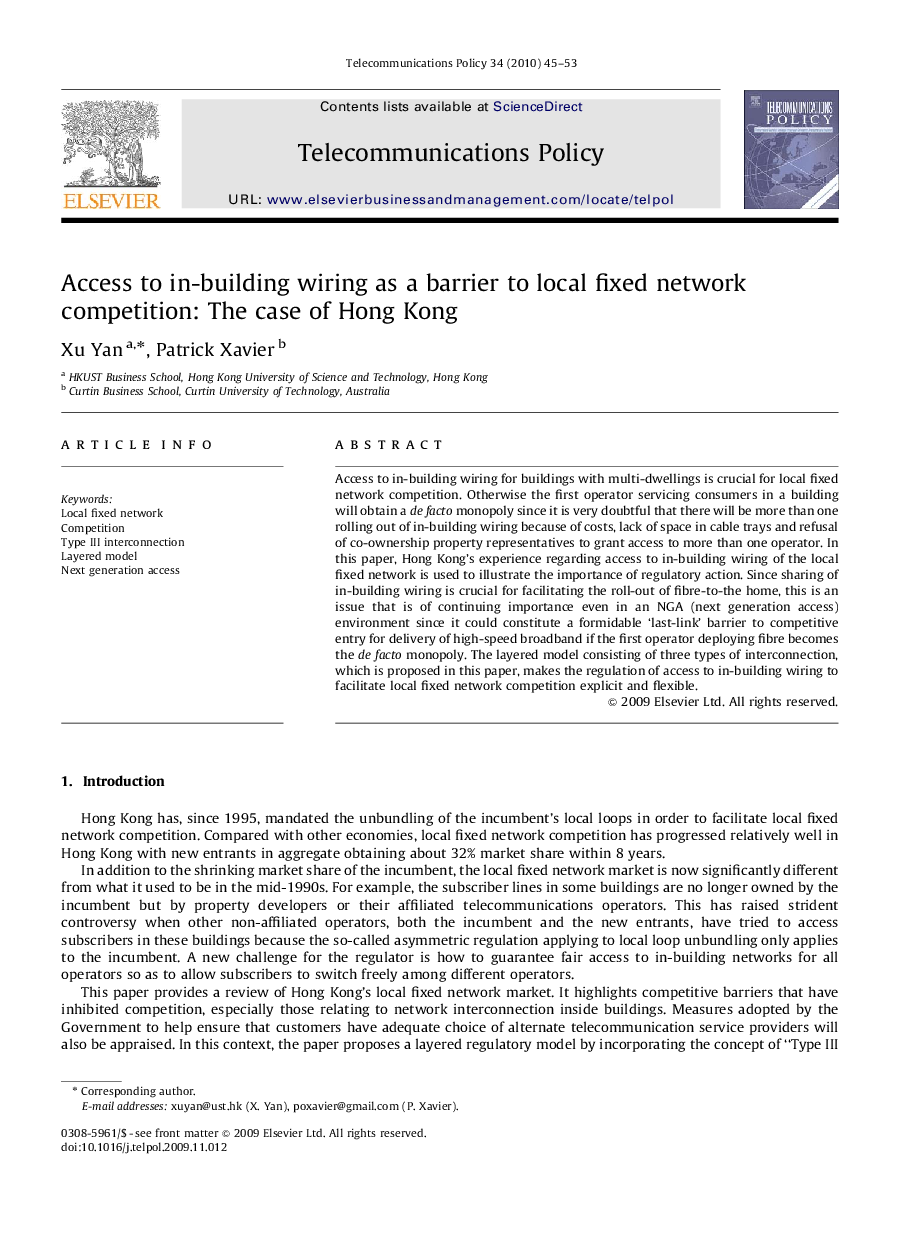| Article ID | Journal | Published Year | Pages | File Type |
|---|---|---|---|---|
| 560207 | Telecommunications Policy | 2010 | 9 Pages |
Access to in-building wiring for buildings with multi-dwellings is crucial for local fixed network competition. Otherwise the first operator servicing consumers in a building will obtain a de facto monopoly since it is very doubtful that there will be more than one rolling out of in-building wiring because of costs, lack of space in cable trays and refusal of co-ownership property representatives to grant access to more than one operator. In this paper, Hong Kong's experience regarding access to in-building wiring of the local fixed network is used to illustrate the importance of regulatory action. Since sharing of in-building wiring is crucial for facilitating the roll-out of fibre-to-the home, this is an issue that is of continuing importance even in an NGA (next generation access) environment since it could constitute a formidable ‘last-link’ barrier to competitive entry for delivery of high-speed broadband if the first operator deploying fibre becomes the de facto monopoly. The layered model consisting of three types of interconnection, which is proposed in this paper, makes the regulation of access to in-building wiring to facilitate local fixed network competition explicit and flexible.
